The floor of the boat is littered with carcasses. My focus should be on our quarry but, despite my best efforts, I’m swiping at my feet in an effort to produce some relief from the relentless attacks. The slow Lake Champlain backwater where guide Drew Price has paddled and poled our canoe is rich with lily pads and weeds, bullfrogs and bass. And biting flies. Lots of flies. It is also rife with bowfin.
Despite the fact that biting insects of all kinds commonly flock to feast on my juicy innards in preference to others’, I normally take it in stride. Springtime black flies in the northeast, mosquitos in Alaska, you name it. I deal. But this is like nothing I’ve ever experienced. After 3 hours on the water, each of my feet has taken at least a hundred bites. By 8 o’clock that evening, the swelling and bruising on each foot is so severe that I look like I’ve spent the last several decades suffering from a horrifying case of Type II diabetes.
Drew, of course, is unfazed. The flies are on me. The hundreds of bites my feet have taken stack up against Drew’s few which he can count with the fingers on one hand. Breaking from laughing at my misery, in a moment of thoughtful empathy, Drew offers to paddle the boat back out to the main body of the lake, where the winds and current sweeping across Champlain offer a respite from the bugs and where we can chase big carp and gar. But there the bowfin are not. So we stay.
Bowfin are wonderfully prehistoric and the last of their kind. Taxonomic relicts that swam in the same waters where dinosaurs waded, bowfin are the sole surviving species in the order Amiiformes, which included close relatives of the bowfin that grew to over 9 feet in length. The modern bowfin is known to reach up to 3 feet in length and 25 pounds in weight. Long and cylindrical in shape, bowfin are often mistaken for snakehead because of their similar, continuous dorsal fin which runs most of the length of their bodies, but are more closely related to gar.
Bowfin are impressive survivors. Able to breathe both in the water and out, they tolerate highly acidic waters that contain puny amounts of oxygen by breaching the surface to gulp air. Bowfin are also able to tolerate extended periods of time completely out of water.

A live, healthy bowfin was once unearthed from wet mud by a farmer plowing a farm field that had been flooded several weeks before by a river flowing over a quarter mile away. Bowfin, in fact, are known to bury themselves in mud to persist through severe drought conditions.
As predators, bowfin are similarly remarkable. They shelter under lily pads, logs, roots and weeds and ambush virtually anything that swims nearby with vicious slashes and swipes. As they are extremely well camouflaged, they keep themselves hidden from us for over an hour as we quietly pole through the pads and weeds.
Eventually, I spot a blue-grey fin barely breaking the surface between two lily pads. At first I think it is vegetation, but seconds later its unmistakable sinuous movement confirms my initial suspicion. I relay the sighting to Drew, who’s considerably better eyes than mine were scouting the other side of the boat, and he puts us in position for a cast.
I strip line that’s slipped from the rod tip to the water back into the boat and lean the rod out for a bowfin cast. To say the very least, this isn’t chalk stream trout fishing. Bowfin are notoriously un-spooky, and we’re practically on top of the fish as I’m making my presentation. I’m dapping more than I am casting. And that’s a good thing. Given the muck and mire in which the bowfin are swimming about, a long-distance presentation to these fish would be virtually impossible.
The bowfin refuses my first offering, but rapaciously grabs at the second, hooking itself in the process. Realizing it has done so, it explodes, and what results is a blur of flying weeds, busting lily pads and splashing water. An instant later, the heavy, lead-eyed fly comes back, but with no bowfin attached. I grab the fly, look at the floor of the boat that the thrashing bowfin has littered with grass and other aquatic vegetation, and can’t do anything but laugh.
As we ply the backwater for another fish to cast to, we drift inches over vastly more bowfin than we manage to see, each time unleashing an eruption that never fails to startle. Subsequent casts fail to elicit takes from the usually grabby bowfin, and by the time dusk rolls around, we’re both scratching our heads.
Not long thereafter, Drew spots two bowfin on either side of our boat and once the anchor is down we’re both casting. I plunk my heavy fly right on my bowfin’s head and put a quick end to any chance of landing that one. Drew, on the other hand, plops his fly precisely into the muck and the bowfin seizes it immediately. After a few minutes of adrenaline-fueled, uncooperative behavior, the fish comes to the boat.

With a bowfin in hand, and the the deer and horse flies still at it, we agree to spend the remainder of the waning evening scouting for gar in the breeze-swept reeds that line the lakeshore on our way way back to the boat launch. But, as the sun dips to the horizon, putting on a spectacular show above Lake Champlain’s shimmering waters, that one bowfin is the only victory of the day.
Still, before we’ve hit the launch, Drew and I are making plans for our next outing. The bowfin’s predatory power is one I’ve scarcely — if ever — seen in freshwater anywhere and their Jurassic roots make the experience truly one of a kind. Next time, however, I’ll be wearing shoes.




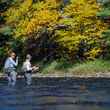
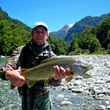
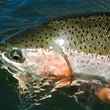




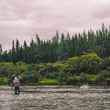




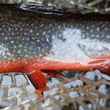



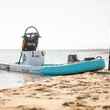
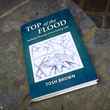



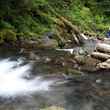


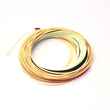
Comments
DDon replied on Permalink
More ferocious than pike?
Chad Shmukler replied on Permalink
Pound for pound, I'd say yes. But it is a different fishing experience besides both pike and bowfin being ambush predators.
Pike will move much further for a fly than bowfin, in my limited experience. So you can search for pike with your fly. With bowfin on the fly, there's much more of a hunting/stalking aspect to it.
Darin Crew replied on Permalink
Champlain is an unbelievable fishery, the smallmouth fishing is unreal. My largest bowfin came from Champlain, over 10 lbs on a tiger colored crankbait, off Hero Point. A great fish indeed.
Pages